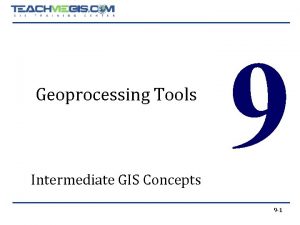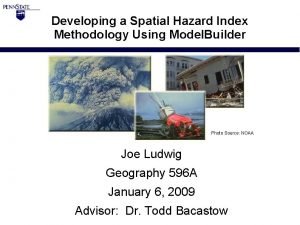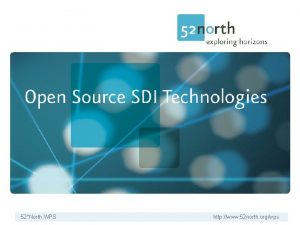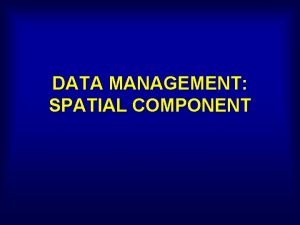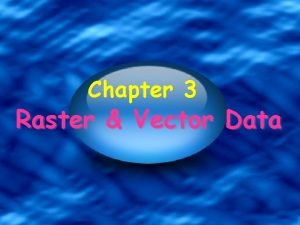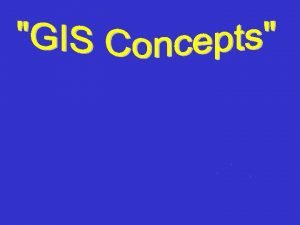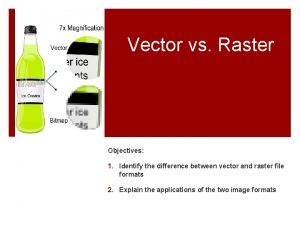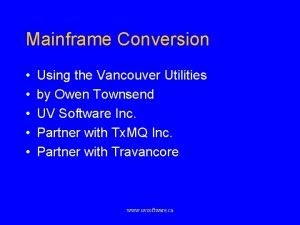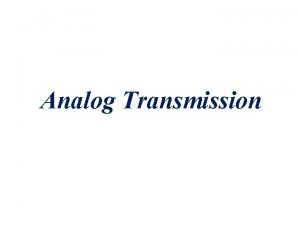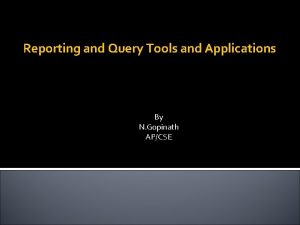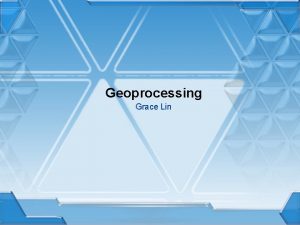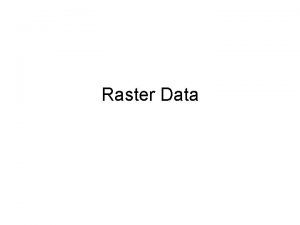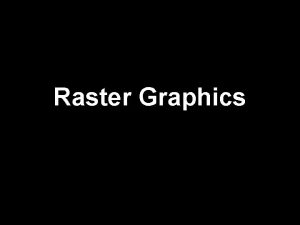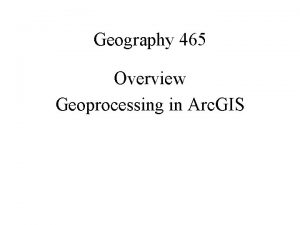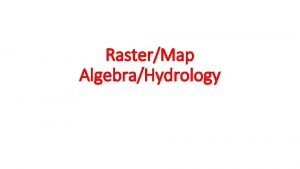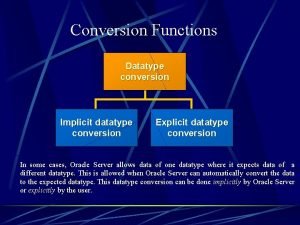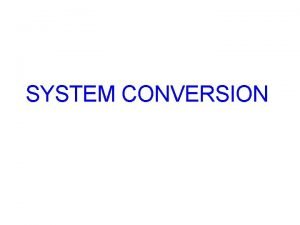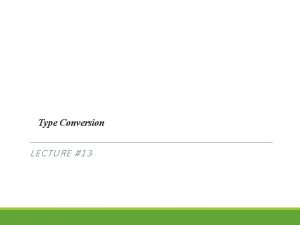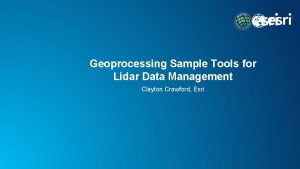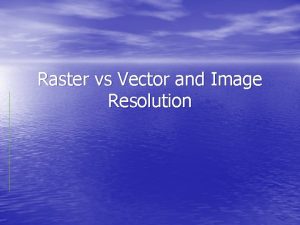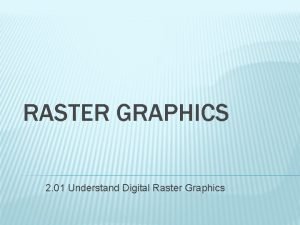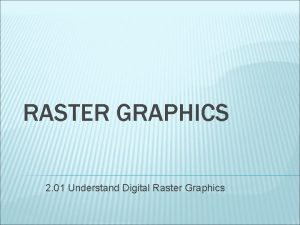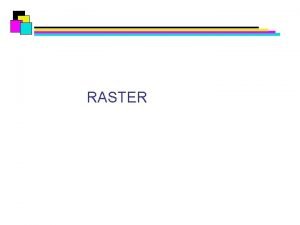Geoprocessing and georeferencing raster data Raster conversion tools


















- Slides: 18

Geoprocessing and georeferencing raster data

Raster conversion tools Geoprocessing tools Arc. Catalog tools

Arc. Map - raster projection options q Best situation - all inputs have same spatial reference q Simple or robust algorithm choice q Applies projection on the fly § Projection of data frame or first layer q Export option - data frame or original projection § Various export formats

Geoprocessing - raster projection q Data Management Tools > Projections § Best raster projection tool § Use resample method • Nearest neighbor • Bilinear interpolation • Cubic convolution § Option to specify registration points • origin point for anchoring output cells q Geoprocessing environment § General settings for geoprocessing § Applied to all output rasters

Conversion on the fly q Many functions accept feature or raster data as input § Feature data automatically converted when necessary q Non-grid rasters converted to grid for analysis § Consider converting compressed data before processing

Geoprocessing - raster tools q Tools to: § Flip raster along horizontal axis. § Flip raster along vertical axis. § Converts between two coordinate systems. § Scale by the specified x and y § Rotate around a specified point by a specified angle § Shift by specified x and y shift § Transform using links

Conversion: polygon to raster q Convert using string or numeric field § Unique attributes assigned value in the output raster § Conversion field added to VAT q May results in: § Loss of detail 100 m • Smaller cell size — better representation • Larger cell size — more generalization § Loss of topological relationships 400 m

Conversion: line to raster q Identifies raster cell crossed by the line § Codes cells with the attribute value associated with line § if more than one value for a cell – longest arc used q Cell size should be § Average width of the linear features Lines

Conversion: Point to raster q Method: § Cell with center closest to point xy - coded with attribute of point q q q No. Data assigned if no point available. Cell size — overriding factor Note: § Most often interpolate z values for points, not convert § Seldom can original points be retrieved from converted raster without loss

Conversion: Raster to feature q Raster to polygon § § § Regions vector polygons Cell size controls “blockiness” Deploy raster generalization to reduce “stair-step” effect q Raster to lines § Stream to feature tool q Raster to Point § center of cell § defines point feature XV

Georeferencing a raster Image: Not georeferenced Vector Data

Georeferencing steps 1. Add Georeferencing toolbar 3. Establish Links 4. Assess Accuracy 2. Add Layers 5. Save Transformation Update georeferencing Rectify

Georeferencing toolbar q Component of Arc. GIS deployed in Arc. Map. q Does not require Arc. Gl. S Spatial Analyst Rotate and Shift

Establishing links q Links used to tie unreferenced raster to georeferenced source data q Requires: § At least three links § Evenly distributed over the entire raster q Choose Link features that will not change position with time Reference data 0, 0

Assessing accuracy of links q The Link Table § Shows accuracy of transformation § Reports residual error of each link and RMS error for whole image q RMS error depends on § Raster cell size § Accuracy in adding links RMS= E 12 + E 22 +…en 2 n

Initiating transformation q Final stage of alignment § Two choices q Update Georeferencing § Transformation information stored with raster and used when displayed or analyzed § No resampling of original data q Rectify § Raster is resampled § New output created

Transformation process q Applies polynomial equation to unreferenced raster § Source coordinates converted to rectified coordinates § Transformation complexity determined by: • polynomial order number of links and distortion of source raster 1 st order: Linear Transformation Change of scale In X Original Image Change of skew In Y 2 nd order or higher: Polynomial Transformation Rotation

The Rectification process q Creates output raster from link positions q Resamples source raster q Fits source raster to output raster
 Geoprocessing
Geoprocessing Geoprocessing
Geoprocessing Geoprocessing
Geoprocessing Vector data vs raster data
Vector data vs raster data Raster vs vector data
Raster vs vector data Components of gis
Components of gis Unstructured data to structured data conversion
Unstructured data to structured data conversion Is stroke a raster or vector image
Is stroke a raster or vector image Spontaneous generation in data flow diagram
Spontaneous generation in data flow diagram Describe data and process modeling concepts and tools
Describe data and process modeling concepts and tools Cutting tools in sewing with pictures and meaning
Cutting tools in sewing with pictures and meaning Difference between random scan and raster scan
Difference between random scan and raster scan In random scan display, the frame buffer holds ….
In random scan display, the frame buffer holds …. Cathode ray tube in computer graphics
Cathode ray tube in computer graphics Raster scan line in computer graphics
Raster scan line in computer graphics Mainframe data conversion solution
Mainframe data conversion solution Digital to analog conversion in data communication
Digital to analog conversion in data communication Data conversion cycle
Data conversion cycle Reporting and query tools
Reporting and query tools
